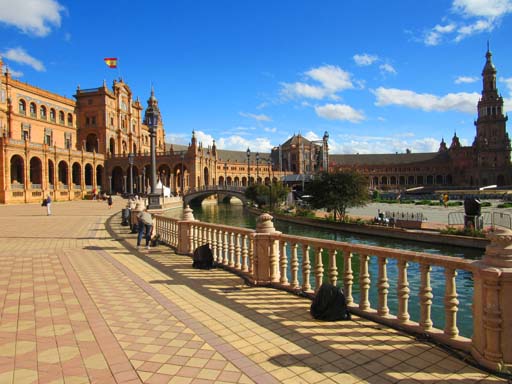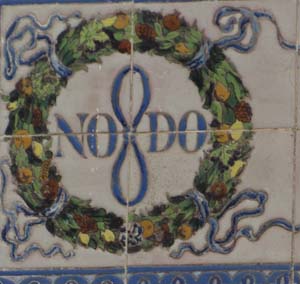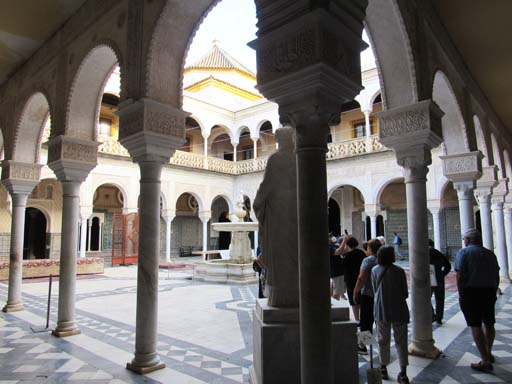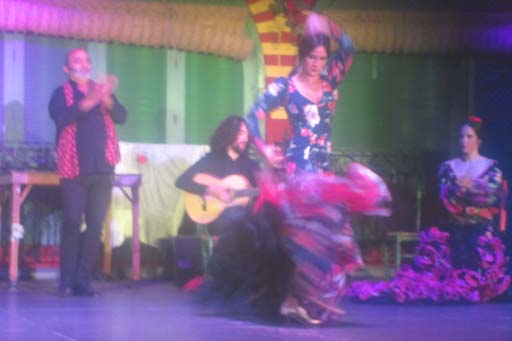Up early in the morning for the long drive to Andalucia and the city of Sevilla, followed by a check-in to a hotel so trendy, overdesigned, stylish, and chic that practically nothing worked. It was next to impossible to login to the wifi, we couldn’t get the AC to function (and in Sevilla, where the temp got to 130 degrees F several times this last summer, AC is necessary not just for comfort, but for life), and the shower floor was so slippery that it took maximum effort to prevent myself from pitching headfirst through the glass. It turned out that the AC wouldn’t work with the window open, and the window was open because it had broken and couldn’t be shut. Fortunately the maintenance guy, who I met at the door while wearing only a pair of bathing trunks and a towel around my neck to absorb the sweat, was able to fix the window. We ended up showering in the bathtub, which was fortunately equipped with a shower— it was just as slippery as the shower cubicle, but there were bars to hang onto.
In the States, this would have been a lawsuit waiting to happen, but Spain is more laissez-faire about these things. Shower at your own risk, and if you get hit by a car while crossing the street, it’s your fault.
Sevilla is one of the most beautiful cities of the world, right up there with Paris an’ Prague an’ them. Old Money tells. Sevilla is an inland port, 80 kilometres up the Guadalquivir from the sea, and therefore much safer from pirates and hostile foreign nations than more exposed locations. (It was once sacked by Vikings, however.) From 1503 Sevilla was the only port licensed to trade with the New World, so all the gold, silver, and gems, and all the commodities grown by slaves and near-enslaved farmers such a tobacco, sugar, cacao, spices, etc., came up the Guadalquivir to Sevilla, which quickly grew to a city of enormous wealth, soon on display in architecture and art. The enormous tobacco factory— where Carmen labored in the opera— still stands, as does the General Archive of the Indies, holding millions of documents chronicling the trade that moved through the port.
The architecture of the city features every style from Moorish to the present day, and is often as not a pastiche of every style imaginable, as in the Plaza de España, built for the Ibero-American Exposition of 1929. It’s a pleasure to just wander around and take in all the buildings and the Guadalquivir waterfront. We wandered through the narrow streets of the former Jewish quarter, which hasn’t been Jewish since a pogrom in the 14th century killed or converted the inhabitants, though it remains full of architectural interest.
Sevilla is known by a rebus, NO8DO, with the numeral 8 drawn larger than the other characters and meant to represent madeja, a skein of wool. NO8DO is pronounced No me ha dejado, “She has not abandoned me,” “she” referring to the city.
We took a long stroll through the Casa de Pilatos, a palace built around 1500 and named, for obscure reasons, after Pontius Pilate. Built in a mixture of Moorish and Italian styles, the palace remains the ancestral home of the Duchess of Medinaceli, who incidentally is the most titled aristocrat in the world, holding no less than 43 titles.
The palace is covered in thousands of brilliant tiles, tiles being another legacy of the Moors very much on display in Sevilla. Normally the main court would be a garden, but in this case it’s been turned into a display of Greek and Roman sculpture salvaged from the city’s old Roman ruins. Athena stands in one corner, but her niche was too small for her helmet and arms, so they’re displayed elsewhere, leaving her bald and as armless as the Venus de Milo.
A film crew was busy setting up in different areas of the palace. The chapel was screened off, so apparently the production takes place in a non-Christian setting. Judging by the amount of poufy cushions the prop men were scattering about, we’re meant to be in Araby.
The palace may be seen in Lawrence of Arabia, Kingdom of Heaven, and other big movies.
Andalucia is the home province of two mighty Iberian institutions, bullfighting and flamenco. We didn’t see a bullfight, but we did hie ourselves to La Catedral en Sevilla, home of flamenco.
As with the Fado concert, this was in a kind of dinner theater setting, a small theater with rising tiers and tables on which was served a set-piece meal and wine. Then came the show.
I have a modest familiarity with flamenco because of an international master class taught every June in Albuquerque, where the master teachers put on a show the last two nights. Kathy attends every year, and I join her when I’m not teaching Toolbox. Terry and Jim also had an interest, as their granddaughters spent many years studying flamenco.
In fado the passion is intimate, in flamenco the passion is explosive. And despite the dancers’ outward show of formal gravity, I had the sense that they were all very happy to be there. This was one of the first performances after the Covid restrictions were relaxed, and their eighteen-month involuntary vacation had ended. The singer, for one, was having the time of his life.
The troupe featured two male and two female dancers, a guitarist, and the singer. Each of them got a workout. The dances and music tell stories, and in this case included a slightly campy flamenco ballet of Carmen, complete with Bizet’s music.
I left with the stamping, the singing, and the strumming echoing in my head, and a desire for more wine which I soon indulged. Being in the audience at a flamenco event is hard work.




The Plaza de España does appear in “The Phantom Menace” as Naboo.
Spain has been on my bucket list for a long time; enjoying it vicariously through your travels!
Comments on this entry are closed.